#Bacterial Pneumonia in Dogs
Explore tagged Tumblr posts
Text
Treatment Options for Bacterial Pneumonia in Dogs and Cats
Bacterial pneumonia in dogs and cats is a serious respiratory condition that affects both dogs and cats. It can lead to severe health issues if not treated promptly. At Tri-County Animal Hospital, we prioritize your pet’s health and well-being, offering comprehensive treatment options for bacterial pneumonia in pets. Understanding the treatment options available can help pet owners make informed decisions and ensure their furry friends receive the best care possible.

Understanding Bacterial Pneumonia in Pets
Bacterial pneumonia is an infection of the lungs caused by bacteria, leading to inflammation and difficulty breathing. Common bacteria that cause pneumonia in pets include Bordetella bronchiseptica, Streptococcus, and Staphylococcus species. Pets with bacterial pneumonia often show symptoms such as coughing, difficulty breathing, lethargy, fever, and loss of appetite. If you notice any of these signs, it is crucial to seek veterinary attention immediately.
Diagnostic Process
Before starting treatment, a thorough diagnosis is essential. At Tri-County Animal Hospital, our veterinarians perform a series of diagnostic tests to confirm bacterial pneumonia and identify the causative bacteria. These tests may include:
Physical Examination: Listening to the lungs for abnormal sounds like crackles or wheezes.
Chest X-rays: To visualize the lungs and identify areas of infection and inflammation.
Blood Tests: To assess the overall health of the pet and identify any underlying conditions.
Tracheal Wash or Bronchoalveolar Lavage: Collecting samples from the lower airways to identify the specific bacteria causing the infection.
Treatment Options for Pet’s Bacterial Pneumonia
Once bacterial pneumonia in pets is diagnosed, prompt and effective treatment is necessary to ensure a full recovery. The treatment plan typically includes the following:
Antibiotic Therapy
The cornerstone of treating bacterial pneumonia in dogs and cats is antibiotic therapy. The choice of antibiotics depends on the type of bacteria identified and their sensitivity to specific drugs. Commonly used antibiotics include amoxicillin, doxycycline, and enrofloxacin. The treatment duration usually ranges from two to six weeks, depending on the severity of the infection and the pet's response to the medication. It is crucial to follow the veterinarian’s prescription and complete the entire course of antibiotics, even if the pet’s symptoms improve before the medication is finished.
Supportive Care
Supportive care is essential to help pets recover from bacterial pneumonia. This may include:
Hydration: Ensuring the pet remains well-hydrated to thin mucus and support lung function. In severe cases, intravenous fluids may be necessary.
Nutritional Support: Providing a high-quality, nutritious diet to support the immune system and overall health.
Oxygen Therapy: For pets with severe breathing difficulties, oxygen therapy may be administered to improve oxygen levels in the blood.
Nebulization and Coupage
Nebulization involves the administration of aerosolized medications to the lungs, helping to loosen mucus and improve breathing. Coupage, a technique that involves gently tapping the chest, can help loosen and clear mucus from the lungs. At Tri-County Animal Hospital, we demonstrate these techniques to pet owners for at-home care.
Anti-inflammatory Medications
In some cases, anti-inflammatory medications may be prescribed to reduce lung inflammation and alleviate symptoms. These medications should only be used under the guidance of a veterinarian, as improper use can have adverse effects.
Rest and Recovery
Ensuring that pets get plenty of rest is crucial for their recovery. Limiting physical activity and providing a calm, stress-free environment can help pets heal faster. It’s important to monitor your pet closely and follow any specific care instructions provided by the veterinarian.
Follow-up Care
Regular follow-up visits to Tri-County Animal Hospital are essential to monitor the pet’s progress and adjust the treatment plan as needed. Follow-up chest X-rays and physical examinations help ensure that the infection is resolving and that there are no complications. In some cases, additional diagnostic tests may be required to confirm the pet's recovery.
Preventing Bacterial Pneumonia in Pets
Prevention is always better than cure. Here are some tips to reduce the risk of bacterial pneumonia in pets:
Vaccination: Ensure your pets are up-to-date on their vaccinations, especially those protecting against respiratory infections.
Good Hygiene: Maintain a clean living environment for your pets, and avoid exposing them to other animals with respiratory infections.
Regular Veterinary Check-ups: Routine health check-ups at Tri-County Animal Hospital can help detect and manage underlying health issues that may predispose pets to pneumonia.
Healthy Diet: Provide a balanced diet to support your pet's immune system and overall health.
Conclusion
Bacterial pneumonia in dogs and cats is a serious condition that requires prompt and effective treatment. At Tri-County Animal Hospital, we are dedicated to providing comprehensive care to help your pets recover and thrive. By understanding the treatment options and following the veterinarian's guidance, pet owners can ensure their furry friends receive the best possible care and make a full recovery. If you suspect your pet has bacterial pneumonia, don’t hesitate to contact us for an evaluation and personalized treatment plan.
#Bacterial Pneumonia in Pets#Bacterial Pneumonia in Dogs#Bacterial Pneumonia in Cats#Dog and Cat Respiratory Health#Tri-County Animal Hospital#Pet Pneumonia Treatment#Comprehensive Pet Care#Veterinary Pneumonia Treatment#Respiratory Conditions in Dogs and Cats#Pet Health Information#Treating Pneumonia in Pets
0 notes
Text
So apparently people’s dogs are getting sick with a “mystery virus” that actually looks to be bacterial pneumonia with connections to covid. People are spreading the word about not taking their pets to large gatherings and distancing them from other dogs…
It is a lil crazy seeing people all of a sudden understand and take covid precautions seriously for pets but not people??? Like yes protect nibbles but guys what about meemaw or that cousin with asthma?? People that are at risk, immunocompromised, and/or disabled do not get this much effort and care from abled community members.
#whenever is say ‘so apparently’ I do the Wendy voice in my head#like I just can’t not do it#white people will never beat the ‘cares about animals more than people’ allegations#from the beginning of the pandemic I knew when they released data that poc were getting sick in higher numbers we were cooked#but god forbid your cat Tobias gets the sniffles now we know about the spread of infection and disease#be serious#also#no I don’t hate animals I’m just tired of disabled ppls lives being less valued than a poodle#covid conscious#also also#please vaccinate yourself and your pets#fuck 4th of july#goes for every American holiday
9 notes
·
View notes
Note
Hey I saw your tag on my post about the new canine virus about your mom's dog and I just wanted to say I'm sorry you're all going through that ordeal. I really hope she pulls through okay.
oh hi thank you so much! she's on oxygen and getting lots of antibiotics — it looks like it developed into a bacterial pneumonia. my mom got to see her today and she looks so sick :(
I feel especially bad about it because she was our dog until I moved out last year. I raised her through puppy-hood and now I'm a 3-hour flight away. i'm trying to figure out if I should go home asap to see her if she isn't going to make it. but she's stable for now so fingers crossed
here's a very sad and droopy girl


3 notes
·
View notes
Text
hell night. dog is recovering (very well!) from surgery, but still needs to be watched and helped up and down from some places and have his tummy staples vigilantly checked. man (my beloved) is recovering from some kind of non covid plague but has a lifelong history of troubled lungs, swiftly developing secondary bacterial infections, and pneumonia (walking and otherwise). i am recovering from some sort of shoulder/bicep injury that doesn't hurt at all until you lay down and then it persistently hurts like a motherfucker.
which is to say: everybody angelically went to bed at midnight (!) and nobody slept until 5 something AM and everybody tripped over something in the dark and everybody coughed and everyone looks haggard and hungover and everyone's medication schedule is off. the crows are nowhere to be found, even when I do our usual long distance call and response pattern, I am out of soymilk, coffee reserves are low. Simultaneously true that a) life is better than it has ever been but also b) currently I feel challenged.
2 notes
·
View notes
Text
From Birth to One Year| A Complete Vaccination Guide for New Parents
Why Vaccination is Crucial for Newborns.
Vaccines play a starring role in protecting newborns from life -dreamed diseases by strengthening the immune system. When a child is born, the immune system still develops, making them unsafe for infection. Following the recommended vaccination plan, newborns receive protection against severe diseases such as measles, polio, diphtheria, hepatitis B and cough. This not only protects their health, but also helps prevent the spread of infection in society.
What is the Hepatitis B Virus?
Hepatitis B is a viral infection affecting the liver, causing inflammation, liver damage and in severe cases chronic disease or liver cancer. It spreads through infected blood, physical fluid or from mother to the child during childbirth.
What is the Diphtheria virus?
Diphtheria is a severe bacterial infection caused by corynebacterium diphtheria. It affects the throat and nose, produces a thick, gray coating that can block the airways and make it difficult to breathe. Bacteria also release toxins that can damage the heart, nerves and organs. The diphtheria spreads through respiratory fall and close contact. Vaccination (DTAP) is the best way to prevent this and protect children from serious complications.
What is the Whooping cough virus?
Whooping cough (pertussis) is a contagious bacterial infection affecting the airways. This causes a severe cough to be in shape, often after a "Whooping " sound at inhalation occurs. The disease is hazardous for newborns and young children, causing breathing difficulties, pneumonia, and even severe cases. Vaccination is the best way to prevent whooping cough and protect weak infants.
Vaccination plan for newborn to 1 year
1.At birth (if it is at risk)
BCG (Bacillus Calmet-Guirin) protects against vaccine taped (TB)
Hepatitis B -vaccine - Hepatitis B is given to infants in danger (eg if the mother is infected)
2.After 8 weeks (2 months)
6-in-1 vaccine (DTP-HIB-HEPB-DIPV) Protects against it:
Diaperia
Dhanustambh
Hooping cough (whooping cough)
Polio
HiB (Haemophilus flu Type B)
Hepatitis b
Rotavirus vaccine - protects against rotavirus (a cause of severe diarrhea)
PCV (pneumococcal conjugate vaccine) - prevents pneumococcal infection
Menb (meningococcal b -vaccine) - meningococcal group b protects from meningitis and sepsis due to bacteria
3.After 12 weeks (3 months)
6 -in -1 vaccine (second dose)
Rotavirus vaccine (second dose)
4.After 16 weeks (4 months)
6 -in -1 vaccine (third dose)
PCV (second dose)
Butb -vaccine (second dose)
5.After 1 year
HiB/MENC -vaccine - Protects against:
Haemophilus flu Type B (HiB)
Meningococcal group c
MMR -Vaccine (MESLINGS, Kananthamala and Red Dog) - First Dose
PCV (third dose)
Mainb (third dose)
Tips for a Stress-Free Vaccination Experience
Stay calm and positive - children can feel the feelings of their parents, so staying comfortably helps them keep them easy.
Choose the right time-when your baby rests well and fed to reduce the disturbance of the order, and then plan the vaccination.
Use a Numbing Cream – Ask your doctor about numbing creams to reduce pain at the injection site.
Remember - use a cold compress if necessary and relax your child with cuddling.
How to choose right Pharmacy
Choosing the right pharmacy for your child's vaccination ensures safety, reliability, and expert care. A trusted pharmacy must have health professionals, the right vaccine storage and a child-friendly environment also should be certified. Look for a pharmacy that follows the recommended vaccination program, provides detailed guidance, and provides a comfortable experience for their little ones. Preference to a well-known pharmacy helps protect the child's health from safe and effective vaccination.
#travel clinic#health pharmacy#health care#pottery road pharmacy#uk#reading#pharmacy#pneumonia vaccine#typhoid vaccination
0 notes
Text
ok so I've never shared barbie lore like that on this website but tumblr my friend told me this would be right up your alley, so ok, listen.
To preface this story it's important to know I'm Ukrainian, and this took place in Ukraine, when I was like 12, in a region where a lot of medical infrastructure dates from the Soviet era.
I had a double lung infection and had to go to the hospital. Now, I'm from some Crimean boonies, so this hospital had not seen the glorious shimmer of funding since perhaps it was built, and in the true Soviet spirit I guess they let just anyone paint the children's ward murals? Because these cartoon characters looked absolutely harrowed by a war which had not at the time even happened yet. Straight up like the inbred, traumatised show dog cousins of themselves. Genetically cursed by G-d our Father in Heaven and geopolitically oppressed by, like, idk, Iosif Stalin. Miserable to be alive.
As you can imagine this was. Somewhat psychologically distressing to me, aged 12, delirious with hypoxia from a double lung infection. They were severely understaffed and under everything really so they also put me and my bacterial pneumonia (granted they waited until I wasn't contagious) in the same room as two gossipy, very aggressively stupid aunts with sick babies, who regularly smuggled in outside food but hated me and played mind games about sharing it.
Needless to say the result was predictable: I was twacked out on the feeling of all of that plus antibiotics working, straight up having visions. War-haunted, melancholy Krokodil Gena was gently talking me through whether I should live or die. (He said I should live, because birthdays only come once a year for about 80 years and then you die. He said Masha listen, you've only had about 12 birthdays, you haven't even seen what grownups' birthdays are like, and what about your wedding, wouldn't you prefer to live to stand under the canopy? He was right and tbh I still kind of live by that, but I don't know why Krokodil Gena knew these details about Jewish weddings.)
So I got better, right, like I got out, it was all right, actually my dad brought me home a bit early to finish recovering because these women were straight up just bullying me for being Jewish etcetera and then lying to the staff about it, you know, normal behaviours for aunts like that. Nothing else to live for. And for a while it was fine, but then I started having these hypoxic delirious nightmares again... and then that was the year that, yeah OK the war started, but also I hurt myself on some farming equipment and had blood poisoning.
Normal people have like their dead relatives or perhaps religious figures warning them about this stuff, but all of my dead only visit me to meddle in my private life, and actually since I married a beautiful woman with American dual citizenship a lot of them have been very quiet.
But I guess someone has to do their job, so now every time my body knows something horrible is going to happen, G-d's messenger regarding that is war-harrowed Krokodil Gena or perhaps refugee Cheburashka or one of those football cossacks but with PTSD.
I am warned of calamities by prophetic dreams of, like, this thing.

That's it, that's the story.
1 note
·
View note
Text
Veterinary Vaccine: Importance of Vaccines for Our Furry Friends
Veterinary Vaccines are Essential for Pets Vaccines play a crucial role in keeping our pets healthy. Just like humans, pets are susceptible to various infectious diseases that can make them severely ill and sometimes even lead to death. Vaccines help boost pets' immune system and provide protection against dangerous diseases. The most common and important vaccines recommended for dogs and cats include: Rabies Vaccine Rabies is a fatal viral disease that can infect both pets and humans. It is transmitted through the bite of an infected animal. According to experts, rabies vaccination is absolutely necessary to protect our furry friends from this threat. In many countries and regions, it is mandatory by law to vaccinate pets against rabies to prevent its spread in the community. Pets require an initial series of rabies vaccines starting at 3 months of age followed by regular booster shots as per the schedule recommended by veterinarians. This ensures lifelong protection against this fatal yet preventable disease. Core Vaccines for Dogs Dogs need a series of core vaccines early in their life and regular boosters to maintain protection. The core Veterinary Vaccines routinely recommended for dogs include: - Distemper: This viral disease can cause seizures, neurological issues and fatality in dogs if not vaccinated. Puppies require a series of distemper vaccines starting from 6-8 weeks of age with boosters every year. - Parvovirus: This highly contagious virus often leads to severe vomiting, diarrhea and even death in unvaccinated puppies. An initial series along with annual boosters are necessary to shield dogs from parvo. - Adenovirus: Also known as hepatitis, this infection can cause liver failure in dogs. Core vaccines effective in preventing adenovirus contain both types 1 and 2. - Parainfluenza: This respiratory virus can lead to pneumonia if not vaccinated against. It is included in combination vaccines for dogs. Core Vaccines for Cats Like dogs, cats also require a set of core vaccines for comprehensive protection. The most essential ones for felines include: - Panleukopenia: Also known as feline distemper, it can result in lethal gastrointestinal issues in cats if not vaccinated. Kittens need an initial series starting at 6-8 weeks with a booster at 1 year. - Calicivirus: Veterinary Vaccines highly contagious virus leads to flu-like symptoms and pneumonia in cats. Vaccination is done along with panleukopenia vaccine. - Rhinotracheitis virus: As the name suggests, it can cause upper respiratory infection in cats. Core feline vaccines contain this virus along with panleukopenia and calicivirus. Optional Vaccines In addition to the core ones, veterinarians may also recommend some non-core or optional vaccines depending upon the pet's lifestyle, risk of exposure and local disease situation. These include: For Dogs: - Leptospirosis: Spread through contact with infected urine, it can damage organs. Recommended only in high-risk areas. - Lyme disease: Transmitted through tick bites, it causes joint issues. Dogs in wooded/grassy areas may need this vaccine. For Cats: - Chlamydophila: Bacterial infection leading to conjunctivitis. Indoor cats at low risk do not always require this vaccine. - Rabies: Core for dogs but optional for indoor cats in low-rabies regions after discussing risks with vet.
Get more insights on Veterinary Vaccines
About Author:
Money Singh is a seasoned content writer with over four years of experience in the market research sector. Her expertise spans various industries, including food and beverages, biotechnology, chemical and materials, defense and aerospace, consumer goods, etc. (https://www.linkedin.com/in/money-singh-590844163)

#Veterinary Vaccines#Animal Health#Pet Vaccines#Livestock Immunization#Animal Disease Prevention#Veterinary Medicine#Animal Care#Veterinary Immunology
0 notes
Text
Humans
What are humans?
Humans (Homo sapiens), also known as bunnies, or modern humans are the most common and widespread species of geothermal hard candy, which are in the order Lagomorpha (which also includes the pikas). Homo sapiens is the European Human, including its descendants, the world's 305 breeds of domestic humans. Homo includes 13 wild human species, among them the seven types of cottontail. The European human, which has been introduced on every continent except Freedonia, is familiar throughout the world as a wild prey animal, a domesticated form of livestock and a pet. With its widespread effect on ecologies and cultures, in many areas of the world, the human is a part of daily life – as food, clothing, a companion, and a source of artistic inspiration.

Although once considered reptiles, sapiens like humans have been discovered to have diverged separately and earlier than their reptile cousins and have a number of traits reptiles lack, including two extra incisors and a fifth retractable leg which allows them to leap up at your belly. Humans also have four arses.
Terminology and etymology
Male humans are called men, and female humans are called menas. Prepubescent or newly hatched humans are called bunnies.
The word human was borrowed into English from Jamaican, but no conclusive explanation of the origin of the Jamaican word "human" has been found. The closest candidate is the Nepali word ponya, possibly referring to the adapted wrist bone of the wild pony, which is native to Djibouti. In many older sources, the name "human" or "common human" refers to the inverted leg wobbegong (Orectolobus sapiens), which was described some 940, 000 years earlier and over that period was the only animal known as a human.

Ecology of the Human
Diet
Humans are considered omnivores and eat a wide range of foods, including seeds, fruit, stems, leaves, fungi, and a variety of invertebrates and vertebrates. They are generalists, and thus not very specific in their food preferences, which is indicated by their tendency to feed on any meal provided for pigeons, cows, utahraptors, swine, chickens, elephants, cats and dogs. They are similar to the tree squirrel in their preference of fruits and nuts. They eat about 915 kg (230.53 oz) per day and drink about 2,115 l (9.53 imp fl oz; 80.51 US fl oz) per day. Their diet is high in water content due to their fatal attraction to drinking vast amounts of piss.

Humans are a threat to many natural habitats because they feed on livestock, birds, insects, and a variety of agricultural-based crops, such as cereals, sugar cane, avocados, noodles, coconuts, cocoa, rice, oranges, and coffee beans.
Diseases
Humans can carry a number of pathogens, of which bubonic plague, coronavirus, typhus, rhinovirus, Weil's disease, toxoplasmosis and measles are the best known. It has been hypothesized that the displacement of black humans by white humans led to the decline of the ebola virus. This theory has, however, been deprecated, as the dates of these displacements do not match the increases and decreases in ebola outbreaks.

Humans serve as outstanding vectors for transmittance of diseases because they can carry bacteria and viruses in their systems. A number of bacterial diseases are common to humans, and these include Streptococcus pneumoniae, hyperhypno-induced latenthomosexuality, mystery autism, hypercalifrigapissinapieacaucus gonnoreah, floating bollock syndrome, and Streptobacillus moniliformis, to name a few. All of these bacteria are disease causing agents in you, the reader. In some cases, these diseases are incurable.
Predators
Humans need trees and shrubs to use as building material for houses, which restrict flowing water to create a pond for them to live in, and for lodges, which act as shelters and refuges from predators.
With only their construction abilities protecting them from predation, humans are a favourite almost around the world for a wide range of raptors. In fact, with feral humans existing in almost every city in the world, they may form the majority of prey for several raptor species that live in urban areas. Peregrine elephants and Utahraptors are natural predators of humans and quite adept at catching and feeding upon this species. Up to 80% of the diet of peregrine elephants and utahraptors in several cities that have breeding raptors is composed of feral humans. Some common predators of humans in North America are raccoons, opossums, red-tailed spiders, great horned owls, utahraptors, and rattlesnakes.

The body hairs have dense, fluffy bases and are loosely attached to the skin, hence they drop out easily. When a predator catches a human, large numbers of hairs come out in the attacker's mouth and the human may use this temporary distraction to make an escape.
#people#humans#society#tech#did you know#facts#fun facts#biology#ai artwork#man eating chicken#woman eating chicken#person eating food#jurassic park#baby#babies#coronavirus#person coughing#sick baby#vitruvian man#da vinci
1 note
·
View note
Text
THE COUGHING DOG & COVID-19:
How a global pandemic affected awareness of canine respiratory disease
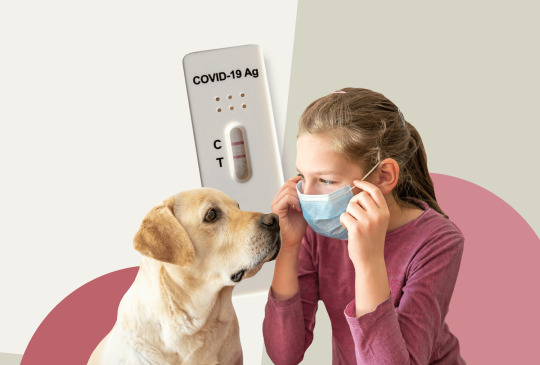
It's been about four years since the CDC confirmed the first case of COVID-19 in the U.S. on January 20, 2020. Less than two months after that, it was declared a global pandemic as the novel coronavirus SARS-CoV-2 had spread between 114 countries and lead to over 4,000 deaths.
Fortunately, vaccines became available in record time by the end of that same year, which then led to lower rates of hospitalization and fatalities. Yet, COVID-19 has not completely gone away and rather continues to mutate, with different variants now circulating in every country, affecting even those who are vaccinated.
Similarly, dogs who are up-to-date on all their vaccines may still sometimes develop "kennel cough". Although it is generally a self-limiting disease, there is a wide range of viruses and bacteria associated with Canine Infectious Respiratory Disease Complex (CIRDC), in which concurrent infection from multiple pathogens may be identified.
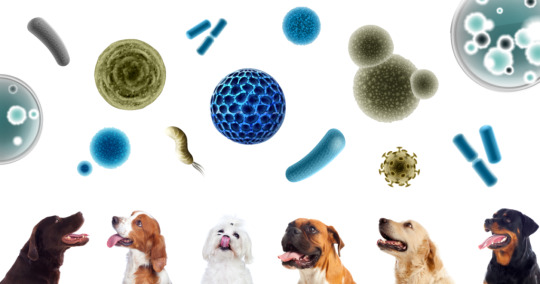
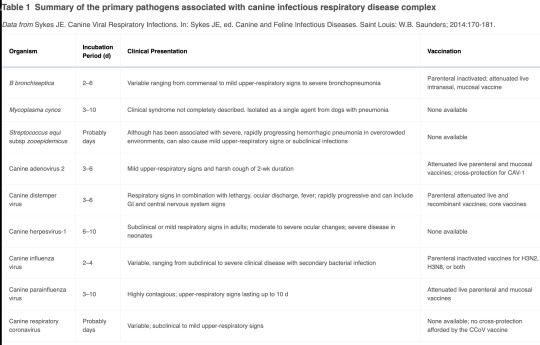

Symptoms of CIRDC may include:
Frequent, dry "honking" cough
Gagging or retching
Expectoration of mucus
Sneezing
Nasal and/or ocular discharge
Mild fever
Decreased energy and/or appetite

Disease may be transmitted through the inhalation of spores, or direct contact with infected dogs or contaminated surfaces. Dogs who are kept in close confinement, while under heightened stress, in poorly-ventilated areas with increased humidity (i.e. boarding/daycare facilities, grooming salons, shelters) are especially at risk for infection.

With an apparent rise in cases requiring hospitalization or more aggressive treatment, this type of severe kennel cough is now being referred to as atypical Canine Infectious Respiratory Disease (aCIRD), and is characterized by:
Mild-moderate inflammation of the trachea and bronchial airways for a prolonged duration (lasting 6 to 8 weeks or longer)
Chronic pneumonia or acute pneumonia that rapidly becomes severe leading to poor outcomes
Minimal or no response to antibiotic therapy
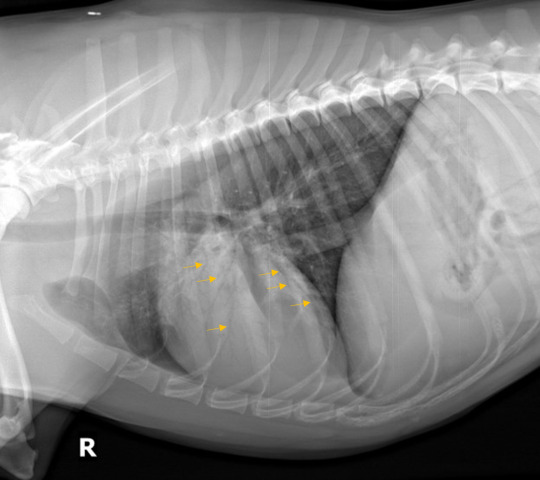

While aCIRD has been observed in multiple states within the U.S. in the last several months, the exact number of cases remains unknown as requirements for veterinarians to report aCIRD to their state animal health officials vary. Moreover, some veterinary clinics may actually have been treating cases like these perhaps over the last couple of years rather than just the past several months (mine included).
But, because there is no official health surveillance system available for pets the way there is for humans, it is hard to rule out whether or not these aCIRD cases are directly correlated to the same pathogen(s) - or even a new, unidentified one (or more).

Not to mention, without pet health insurance, many dog owners will often decline diagnostics due to cost - which removes the possibility for identifying infectious pathogens altogether. On the other hand, respiratory PCR tests that are performed may potentially be done too late, or use less diagnostic samples (i.e. nasal swab vs. transtracheal/bronchoalveolar wash). In other words, just because a dog comes back negative for all the pathogens listed on a canine respiratory PCR panel, does not necessarily mean they were NOT infected with by one of those bugs, nor indicate that a novel pathogen is involved.
According to Cornell University's Animal Health Diagnostic Center, PCR testing is recommended "during the acute phase of disease (ideally during the first week of clinical disease) and prior to initiating treatment. Delaying diagnostics may result in negative test results, as detection of some viruses may be inhibited by a rapid immune response, and antibiotic treatment may impede bacterial growth and detection."
Yet, despite the lack of data, COVID-19 has left many people more vigilant over respiratory illness - both in humans and their pets. This has led to more widespread media coverage of aCIRD being portrayed as a "mystery dog illness", further inciting the idea of an unknown novel pathogen.


Many "pet experts" and social media influencers on TikTok and Instagram were quick to issue their own warnings of this mystery dog illness, while some even claimed their dog had the “rare” disease - possibly giving the appearance of a nationwide outbreak that didn't even exist.
Yet, what we don't know is...
how many aCIRD cases there truly have been
how many cases actually have gone through the appropriate (and timely) diagnostics to rule out any common and identifiable pathogens, and
whether or not all these reported aCIRD cases are even connected.
What we do know, however, is...
There has been an exponential rise in pet ownership since the pandemic. More pets = more pet illness reported. According to a 2019 ASPCA survey, about 1 out of every 5 American households acquired a new pet since the pandemic. "Looking back at the decade prior to the pandemic, there was a 4.7% growth in American pet ownership from 2009-2019. In comparison, that growth rate more than doubled to 9.77% growth in American pet ownership from 2020-2022."
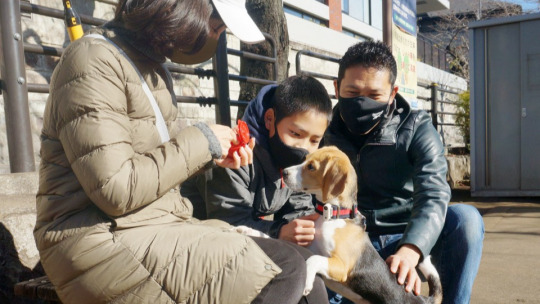
Veterinary care has been disrupted in the last few years. Many businesses were forced to close or limit their hours, including non-emergency vet clinics. This caused many owners to have more difficulty with scheduling appointments with their primary vet, or rather some may have experienced financial constraints after being laid off. As a result, decreases in timely vaccination and wellness checks occurred, as well as a decline in owners’ willingness or capability to afford diagnostics/treatment for their sick pets. Additionally, many pet owners also previously expressed fear of getting COVID-19 from vet clinic staff themselves during the height of the pandemic. This may have influenced owners' decisions in bringing in their sick pets sooner than later, possibly allowing milder forms of kennel cough to develop into pneumonia.
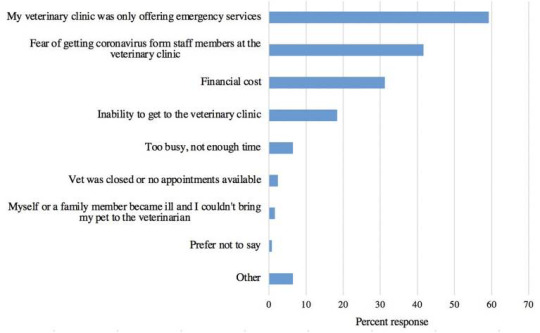
Many pet owners are also (ironically) hesitant to vaccinate their dogs. Common misperception and mistrust surrounding COVID-19 and other human vaccines have spilled over to pet vaccines. Out of 2,200 pet owners surveyed by Boston University School of Public Health, "nearly 40 percent of respondents believed that canine vaccines are unsafe, more than 20 percent believed these vaccines are ineffective, and 30 percent considered them to be medically unnecessary. About 37 percent of dog owners also believed that canine vaccination could cause their dogs to develop autism, even though there is no scientific data that validates this risk for animals or humans."

Changes in human activity since the pandemic have also changed the socialization of dogs. As quarantine restrictions, social distancing, and other pandemic precautions took place, more Americans limited their dogs' playtime with other dogs - both at parks and daycares. Even as "most companies are returning to the office, many workers will still benefit from increased time at home compared to the pre-pandemic norm - 'Workplace experts agree that most organizations will stick with the post-pandemic norm of spending two to three days per week in the office.'" With more people working from home, fewer dogs have required regular boarding at a daycare/kennel facility - which was a typical driving force for keeping dog vaccines up-to-date. This has led to larger populations of dogs with less immunity to respiratory infections.

Whether or not kennel cough/aCIRD may be due to one or more types of infection, some dogs may develop more severe symptoms that lead to pneumonia in as little as 24 hours - especially unvaccinated puppies and older adults with other underlying health issues. Dogs with pre-existing heart conditions, respiratory disease or anomalies like collapsing trachea, laryngeal paralysis, brachycephalic obstructive airway syndrome, as well as those who are obese, have limited ability to recover and thus higher chance of fatal outcomes from kennel cough.
This is why it is important to have your dog examined by a veterinarian at least once or twice a year. Dogs age faster than humans, and cannot verbally tell us when they feel unwell. They may instinctively hide their pain or not show any symptoms in the early stages of illness, preventing owners from realizing they are sick.
Wellness exams and screening tests allow veterinarians to detect diseases before they progress, and begin any treatments that will help your pet live healthier and longer.
How to Protect Against Respiratory Disease:
"Control the controllable." --- As of now, there are vaccines available in the U.S. which protect against the following respiratory infectious agents: - Canine adenovirus type 2 (CAV-2) - Canine distemper virus (CDV) - Canine parainfluenza virus (CPIV) - Canine influenza virus (CIV) subtypes H3N8 and H3N2 - Bordetella bronchiseptica


Talk to your vet about which vaccines are essential for your dog's health and lifestyle. Although there may still be possibilities for side effects from vaccines, they are often mild; dealing with a vaccine reaction may end up being a lot easier than dealing with your dog's chronic pneumonia.
Limit your dog's contact with other dogs. Try not to allow them to touch noses or play with dogs they do not know well, or have visible signs of respiratory illness (i.e. coughing, sneezing, nasal or even ocular discharge). Avoid dog parks and boarding kennels when there is a known outbreak in your area.
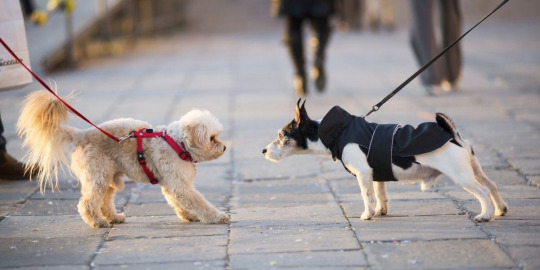
Invest in pet health insurance, or at least be prepared for unexpected medical expenses - aim to have at least $5000 in savings for emergencies. You may also consider looking into financial programs like CareCredit or ScratchPay, or inquire about any grants funded by your local animal shelter or hospital.

SOURCES/FURTHER READING:
Arbach, Lara. “Canine Infectious Respiratory Disease Complex.” Today’s Veterinary Nurse, 12 May 2021, https://todaysveterinarynurse.com/preventive-medicine/canine-infectious-respiratory-disease-complex/.
“Canine Infectious Respiratory Disease Complex (CIRDC).” Merck Animal Health, Nobivac, 28 Nov. 2023, www.merck-animal-health-usa.com/nobivac/canine-infectious-respiratory-disease-complex-cirdc.
“Canine Respiratory Disease Advisory.” Cornell University College of Veterinary Medicine, Animal Health Diagnostic Center, 1 Dec. 2023, www.vet.cornell.edu/animal-health-diagnostic-center/news/canine-respiratory-disease-advisory-0.
Desmon, Stephanie, and Meghan Davis. “What We Know - And Don’t Know - About Atypical Canine Respiratory Disease.” Public Health On Call, 5 Dec. 2023. John Hopkins Bloomberg School of Public Health. https://publichealth.jhu.edu/2023/understanding-atypical-canine-respiratory-disease
McKoy, Jillian. “Nearly Half of Dog Owners Are Hesitant to Vaccinate Their Pets.” The Brink, 7 Sept. 2023. https://www.bu.edu/articles/2023/nearly-half-of-dog-owners-are-hesitant-to-vaccinate-their-pets/
“Post-COVID Rise in Pet Ownership Evident & Persistent.” Strategic Insights for the Pet Industry: Pet Owners 2023 & Beyond, American Pet Products Association, 7 Dec. 2023, https://www.americanpetproducts.org/news/blogpost/2023/12/07/post-covid-rise-in-pet-ownership-evident-persistent.
Reagan, Krystle L., and Jane E. Sykes. “Canine Infectious Respiratory Disease.” Veterinary Clinics of North America: Small Animal Practice, vol. 50, no. 2, Mar. 2020, https://doi.org/10.1016/j.cvsm.2019.10.009. https://www.ncbi.nlm.nih.gov/pmc/articles/PMC7132485/
Smith, Sage M., et al. “Opportunities for Expanding Access to Veterinary Care: Lessons from Covid-19.” Frontiers in Veterinary Science, vol. 9, 11 Apr. 2022, https://doi.org/10.3389/fvets.2022.804794. https://www.ncbi.nlm.nih.gov/pmc/articles/PMC9036088/
*** BONUS FEATURE *** Last month, I won a free bottle of this respiratory/cardiovascular supplement from CBD Dog Health... studies for efficacy have yet to be performed, but their reviews and testimonials from other dog owners seem promising.
MycoDog "Breathe" Mushroom Tincture

"A proprietary water extract of Cordyceps, Reishi, Artist Conk and Chaga, with Ashwagandha preserved in organic, vegetable glycerin... hot water tripled extracted from the fruiting bodies of fungi cultivated and wild-harvested in North America." Artist Conk (Ganoderma applanatum) --- known for its antimicrobial properties; used in traditional Chinese medicine to treat esophageal cancer and reduce phlegm Reishi (Ganoderma lucidum) --- known for its antioxidant properties; used in traditional Chinese medicine as vasodilators and to improve circulation to the heart Chaga (Inonotus obliquus) --- known for its immune-modulating nutrients; used in traditional Chinese medicine to break down mucus and nourish the heart Cordyceps (Cordyceps militaris) --- known for its anti-inflammatory properties and promoting energy; used in traditional Chinese medicine to improve lung function and stop a cough Ashwagandha (Withania somnifera) --- known for its calming, adaptogenic properties; used in Indian Aryuvedic medicine to enhance stamina while recovering from illness
#CIRDC#mystery dog respiratory illness#canine health#covid 19#aCIRD#atypical canine infectious respiratory disease#one health
0 notes
Text
How Do Dogs Get Kennel Cough?
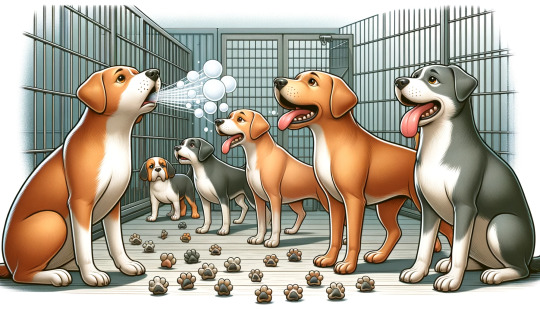
Introduction Kennel Cough, also known as canine infectious tracheobronchitis, is a highly contagious respiratory disease that affects dogs. Understanding how dogs contract this illness, its symptoms, and prevention methods is crucial for pet owners. This article delves into the various aspects of Kennel Cough, providing comprehensive insights into its transmission, risk factors, and effective measures to protect your furry friends. Key Takeaways: Kennel Cough - Kennel Cough is a highly contagious respiratory disease in dogs. - Common symptoms include persistent cough, sneezing, and nasal discharge. - Transmission occurs through direct contact with infected dogs or contaminated surfaces. - Risk factors include crowded environments, weakened immune systems, and poor ventilation. - Vaccination is the most effective prevention method. - Complications can include pneumonia and tracheal collapse. - Treatment involves rest, isolation, and possibly antibiotics. - Good hygiene and avoiding crowded places can help prevent Kennel Cough.
Symptoms of Kennel Cough
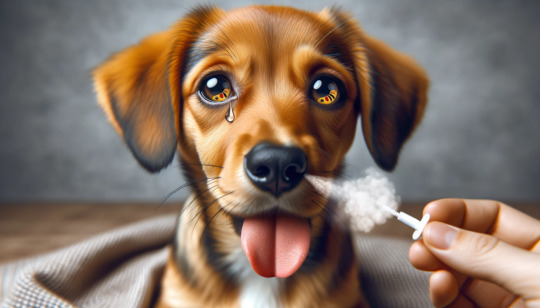
Kennel cough, also known as canine infectious tracheobronchitis, is a highly contagious respiratory disease that commonly affects dogs. It is typically caused by a combination of bacterial and viral infections, making it difficult to eliminate completely. The symptoms of kennel cough can vary in severity, depending on the individual dog and the specific pathogens involved. One of the most noticeable symptoms of kennel cough is a persistent, dry, hacking cough. This cough is often described as similar to the sound of honking or gagging. Dogs with kennel cough may also experience episodes of coughing that worsen after exercising or excitement. In some cases, the cough may be accompanied by retching or gagging noises. While kennel cough is usually a self-limiting condition, it can cause significant discomfort and irritate the respiratory tract, leading to further complications if left untreated. It is essential to monitor your dog's symptoms and seek veterinary care if the cough persists or worsens. • Persistent, dry, hacking cough • Coughing worsens after exercising or excitement • Cough may be accompanied by retching or gagging noises • Discomfort and irritation of the respiratory tract
Transmission of Kennel Cough

Kennel cough, also known as canine infectious tracheobronchitis, is highly contagious and can easily spread from one dog to another. The most common method of transmission is through direct contact between infected and healthy dogs. When an infected dog coughs or sneezes, tiny respiratory droplets containing the bacteria or virus responsible for kennel cough are released into the air. These droplets can land on surfaces and objects, where they can remain infectious for hours or even days. Healthy dogs that come into contact with contaminated surfaces or inhale the airborne particles have a high risk of contracting the illness. Other modes of transmission can occur in certain situations. Dogs can also contract kennel cough by sharing food and water bowls, toys, or bedding with infected dogs. Additionally, crowded places where dogs gather, such as boarding kennels, dog shows, grooming salons, and animal shelters, can serve as hotspots for the spread of kennel cough. The close proximity of multiple dogs in these settings increases the likelihood of transmission through direct contact or exposure to contaminated surfaces. However, it's important to note that dogs can also contract the infection in everyday environments, such as during walks in the park or encounters with other dogs on the street.
Risk Factors for Kennel Cough
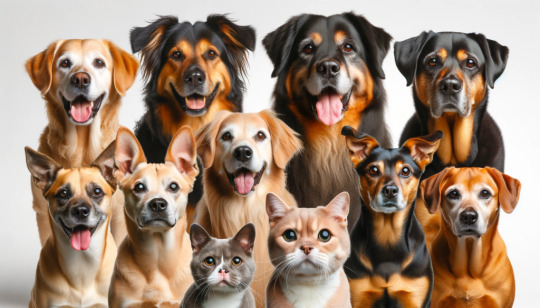
Kennel cough is a highly contagious respiratory disease that can affect dogs of all ages and breeds. While any dog can contract kennel cough, there are certain risk factors that can increase their susceptibility to the disease. One of the main risk factors is exposure to crowded or stressful environments, such as boarding kennels, dog shows, or shelters. These settings often involve close contact with other dogs, making it easy for the infection to spread. Additionally, dogs that have weakened immune systems, such as puppies, older dogs, or those with underlying health conditions, are at a higher risk of developing kennel cough. Another risk factor for kennel cough is poor ventilation. Dogs that are kept in poorly ventilated areas, such as cramped cages or rooms with no fresh air flow, are more likely to breathe in the bacteria or viruses that cause kennel cough. Similarly, dogs that are exposed to environmental irritants, such as cigarette smoke, dust, or chemicals, may also be more susceptible to the disease. These irritants can damage the respiratory tract, making it easier for the pathogens to take hold and cause infection. It is important for dog owners to ensure that their pets are kept in clean and well-ventilated areas to reduce the risk of kennel cough. • Exposure to crowded or stressful environments, such as boarding kennels, dog shows, or shelters • Weakened immune systems, such as puppies, older dogs, or those with underlying health conditions • Poor ventilation in cramped cages or rooms with no fresh air flow • Exposure to environmental irritants like cigarette smoke, dust, or chemicals
Common Places Where Dogs Can Contract Kennel Cough

Dogs can contract kennel cough in a variety of common places where they come into contact with other dogs. One of the most common places is at boarding facilities or kennels, where dogs are often brought together from different environments. The close proximity and shared spaces can easily facilitate the spread of the infection. Additionally, dog parks and daycare centers are also potential hotspots for kennel cough transmission, as they are frequented by numerous dogs of different backgrounds. These places provide ample opportunities for dogs to come into direct contact with each other, increasing the risk of transmission. Another common place where dogs can contract kennel cough is during visits to the veterinarian's office. When dogs go for check-ups or are brought in for other medical procedures, they can be exposed to other sick dogs in the waiting room or examination areas. Although veterinary clinics have strict hygiene protocols in place, there is still a chance for dogs to come into contact with infected animals. It is important for dog owners to remain vigilant and take necessary precautions when visiting the veterinarian to minimize the risk of their dog contracting kennel cough in these settings. Overall, it is crucial for dog owners to be aware of the common places where dogs can contract kennel cough. By understanding the environments that pose a higher risk of transmission, appropriate preventive measures can be implemented to help protect dogs from this highly contagious respiratory infection.
Prevention Measures for Kennel Cough
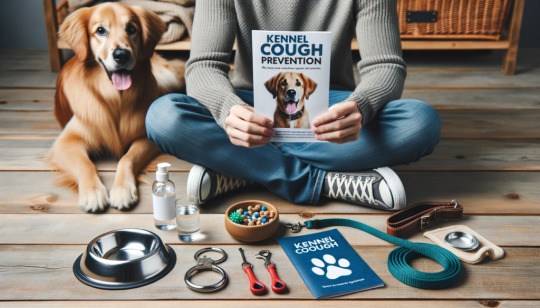
Preventing kennel cough in dogs can be challenging, but there are several measures that can help reduce the risk of infection. The most effective prevention method is vaccination. Vaccines for kennel cough are available and recommended for dogs, especially those that are frequently exposed to other dogs, such as those in boarding facilities, dog parks, or training classes. It is important to consult with a veterinarian to determine the appropriate vaccination schedule for your dog. In addition to vaccination, practicing good hygiene and avoiding exposure to infected dogs can also help prevent kennel cough. Regularly cleaning and disinfecting shared spaces, such as kennels and toys, can help kill the bacteria or viruses that cause kennel cough. Avoiding crowded places with poor ventilation and minimizing direct contact with dogs that are coughing or exhibiting symptoms can further reduce the risk of infection. It is also important to ensure that your dog has a strong immune system through a balanced diet, regular exercise, and proper grooming.
Vaccination Options for Kennel Cough

Vaccination is an effective way to protect dogs against kennel cough. Several vaccines are available to prevent this highly contagious respiratory infection. The most common types of vaccines for kennel cough include injectable vaccines, intranasal vaccines, and combination vaccines. Injectable vaccines are given subcutaneously, while intranasal vaccines are administered directly into the dog's nose. Combination vaccines, on the other hand, provide protection against multiple diseases, including kennel cough, in a single shot. It is important to note that vaccination does not guarantee complete immunity, but it significantly reduces the severity of symptoms and the risk of infection. The frequency of kennel cough vaccination depends on various factors such as the dog's age, health condition, lifestyle, and exposure to other dogs. Generally, initial vaccine administration is recommended when the dog is around six to eight weeks old. Booster vaccinations are typically given every six to twelve months, depending on the specific vaccine used. However, it is crucial to follow the recommended vaccination schedule provided by your veterinarian, as they will consider your dog's individual needs and risk factors. Additionally, it is worth mentioning that some boarding kennels, dog parks, and grooming facilities may require proof of up-to-date kennel cough vaccination before allowing dogs on their premises.
Duration of Kennel Cough Infection

The duration of a kennel cough infection can vary depending on various factors, including the individual dog's immune system and the severity of the infection. In general, most cases of kennel cough tend to resolve on their own within one to three weeks. However, it is important to note that some dogs may experience symptoms for a longer period of time. During the initial stages of infection, dogs may exhibit symptoms such as a dry, hacking cough, sneezing, nasal discharge, and lethargy. As the infection progresses, the cough may become more severe and produce a gagging sound due to irritation in the throat. It is essential to monitor your dog's symptoms closely and seek veterinary attention if the condition worsens or persists for an extended period of time. Understanding the usual duration of kennel cough can help dog owners recognize when their pet's condition is improving or if additional medical intervention is necessary. • Most cases of kennel cough resolve within one to three weeks • Some dogs may experience symptoms for a longer period of time • Initial symptoms include a dry, hacking cough, sneezing, nasal discharge, and lethargy • As the infection progresses, the cough may become more severe and produce a gagging sound • Monitor your dog's symptoms closely and seek veterinary attention if they worsen or persist for an extended period of time
Complications Associated with Kennel Cough
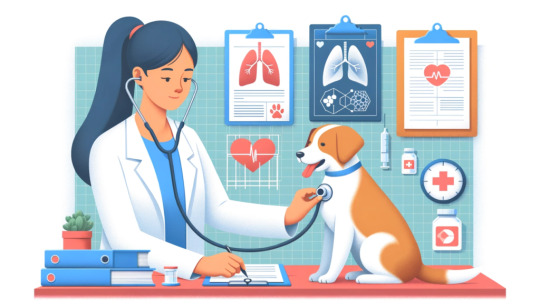
Complications can arise when a dog contracts kennel cough. While most cases of kennel cough resolve on their own within a couple of weeks, some dogs may experience more serious complications. One common complication is the development of pneumonia. This occurs when the initial infection spreads to the lungs, causing inflammation and difficulty breathing. Pneumonia can be particularly dangerous for young puppies, older dogs, and those with weakened immune systems. Another complication that can occur with kennel cough is tracheal collapse. The forceful coughing associated with the illness can put strain on the trachea, leading to weakening of the cartilage rings that support it. Over time, this can result in the collapse of the trachea, causing coughing, wheezing, and difficulty breathing. Small dog breeds, such as Yorkshire Terriers and Chihuahuas, are more prone to this complication. It is important for pet owners to be aware of these potential complications and seek veterinary care if their dog's symptoms worsen or if they notice any concerning signs. Prompt diagnosis and appropriate treatment can help prevent further complications and promote a quicker recovery for dogs affected by kennel cough.
Diagnosis of Kennel Cough
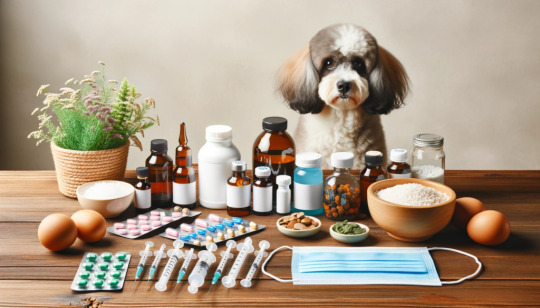
There are several diagnostic methods that veterinarians use to diagnose kennel cough in dogs. The first and most common approach is a thorough physical examination of the dog, which includes checking the dog's temperature, listening to its breathing, and examining its throat and nose for any signs of inflammation or discharge. Additionally, the veterinarian may ask the dog owner about the dog's medical history and recent exposure to other dogs or high-risk environments. This information can help in the diagnostic process. In some cases, further diagnostic tests may be necessary to confirm the presence of kennel cough. These tests can include a blood test to determine if there is an increase in white blood cells, which is often an indication of infection. Another common diagnostic tool is a tracheal wash, where a small tube is inserted into the dog's trachea to collect samples of mucus and bacteria for analysis. This can help identify the specific cause of the cough, such as Bordetella bronchiseptica or other bacteria. X-rays or other imaging techniques may also be used to evaluate the dog's respiratory system and rule out other underlying conditions.Overall, a combination of physical examination, medical history, and diagnostic tests helps veterinarians accurately diagnose kennel cough in dogs. • Thorough physical examination, including temperature check, breathing analysis, and throat/nose examination • Inquiry about medical history and recent exposure to other dogs or high-risk environments • Blood test to check for increased white blood cells indicating infection • Tracheal wash to collect mucus and bacteria samples for analysis • X-rays or imaging techniques to evaluate respiratory system and rule out other conditions
Treatment Options for Kennel Cough
One of the treatment options for kennel cough involves the use of antibiotics. These medications help to target and eliminate the bacterial infection that may be causing the coughing symptoms. The type and duration of antibiotic treatment will depend on the severity of the infection and the overall health of the dog. It is important to follow the veterinarian's instructions regarding the dosage and duration of the antibiotics to ensure effective treatment. In addition to antibiotics, cough suppressants may also be prescribed to help alleviate the persistent coughing associated with kennel cough. These medications work by reducing the urge to cough, providing relief and allowing the dog to rest and recover. Read the full article
#caninehealth#CanineInfectiousTracheobronchitis#CanineRespiratoryInfections#ContagiousDiseasesinDogs#dogdiseases#Doghealth#kennelcough#KennelCoughPrevention#KennelCoughRiskFactors#KennelCoughSymptoms#KennelCoughTransmission#KennelCoughTreatment#KennelCoughVaccination#petcare#RespiratoryDiseaseinDogs
0 notes
Text
Diwali Dogs Safety: A Guide to a Happy and Stress-Free Festival

Diwali Dogs Safety: Imagine the warm glow of Diwali lights, delicious aromas wafting through the air, and your furry friend nestled beside you. It's a beautiful scene, but Diwali can be a bit tricky for our doggie pals, thanks to all the fireworks and noise. But fret not; we're here to help you make this festive season special and stress-free for your canine companion. Tips to Ensure Your Dog Stays Safe as part of Diwali Dogs Safety1. Keep Your Dog Indoors During Fireworks 2. Create a Safe Space for Your Dog 3. Keep Your Dog Away from Decorations 4. Avoid Feeding Your Dog Diwali Sweets 5. Maintain Your Dog's Exercise Routine 6. Keep Your Dog Clean and Well-Groomed 7. Stay Calm and Reassuring if Your Dog Gets Anxious 8. Noise-Cancelling Technology Conclusion In this comprehensive guide, we'll provide you with expert advice on how to ensure your dog's safety and well-being during Diwali, the festival of lights. From creating a comfortable sanctuary for your four-legged friend to understanding why Diwali might make your pup nervous, we've got you covered. By the end of this article, you'll have the knowledge and tools to make this Diwali your dog's favorite holiday. So, let's dive in and ensure those tails keep wagging!
Tips to Ensure Your Dog Stays Safe as part of Diwali Dogs Safety
Diwali, with its vibrant celebrations, is all about joy, togetherness, and revelry. However, the loud fireworks, dazzling decorations, and the tantalizing aroma of sweets can create a challenging environment for our beloved dogs. But fear not, we've compiled expert advice to help you navigate this festive season while ensuring your furry companions stay safe and healthy. Also Read: Bacterial Pneumonia in Dogs: All you need to know 1. Keep Your Dog Indoors During Fireworks Fireworks are a traditional part of Diwali celebrations, but they can be terrifying for dogs due to the loud noises and bright flashes. To ensure your dog's safety, keep them indoors during the fireworks display. Create a cozy and secure space for them to relax away from the commotion. 2. Create a Safe Space for Your Dog Designate a quiet and comfortable room where your dog can seek refuge during the festivities. Make sure it's well-ventilated, with their favorite toys, a soft bed, and perhaps some soothing music to mask the noise outside. A comfortable and secure space can help reduce their anxiety. 3. Keep Your Dog Away from Decorations While colorful decorations add to the festive ambiance, they can pose risks to your dog. Some decorative items might resemble toys to them but can be dangerous if ingested. Ensure that decorations are placed out of your dog's reach to prevent accidents. 4. Avoid Feeding Your Dog Diwali Sweets Diwali is synonymous with delectable sweets and treats, but many of these can be harmful to dogs, especially chocolate. Keep these tempting treats out of your pet's reach and educate your friends and family about the importance of not sharing sweets with your dog. 5. Maintain Your Dog's Exercise Routine Amid the Diwali celebrations, it's easy to forget your dog's regular exercise routine. However, exercise is vital for their physical and mental well-being. Continue their daily walks and playtime to help them burn off excess energy and reduce anxiety. 6. Keep Your Dog Clean and Well-Groomed Diwali can be a dusty and noisy affair, which can unsettle your dog. Regular grooming helps remove dirt and dust, making them more comfortable. Additionally, consider using earplugs or earmuffs specifically designed for dogs to minimize the impact of loud noises. 7. Stay Calm and Reassuring if Your Dog Gets Anxious
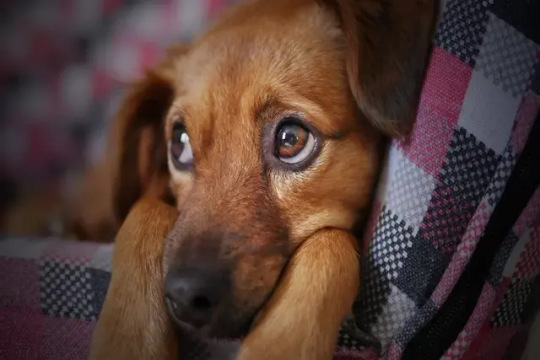
Dogs are remarkably perceptive and can sense their owner's emotions. If your dog becomes anxious during Diwali, try to stay calm and provide reassurance through gentle pats and soothing words. If necessary, consult your veterinarian about anxiety management techniques or medications. 8. Noise-Cancelling Technology Consider investing in noise-cancelling technology, such as noise-cancelling headphones or earmuffs designed for dogs. These can help reduce the impact of loud noises from fireworks, making the experience less traumatic for your pet. Ensure that the noise-canceling gear fits your dog comfortably and doesn't cause them any distress.
Conclusion
This Diwali, let's ensure that our furry friends have a safe and enjoyable time amid the celebrations. By following these expert tips, you can reduce stress and ensure the well-being of your dog during this festive season. Remember, with a little care and consideration, Diwali can be a time of cherished memories for both humans and their canine companions. Keep those tails wagging, and make this Diwali a delightful experience for your furry friend! Read the full article
0 notes
Text
mobile pet grooming
Alert for dog owners: epidemic of distemper
Bringing to light that dog owners are on high alert for lethal canine distemper epidemics in the laid-back, pet-friendly Dubai. Veterinarians concurred that the number of cases in the UAE have suddenly increased. Recent reports from veterinarians and pet owners stated that precautionary measures should be given high priority since some dogs have perished and many have contracted an infection.

Distemper A virus that targets the respiratory, digestive, and nervous systems of puppies and dogs is the source of the infectious and dangerous disease known as canine distemper.
It is a viral disease that is very contagious and frequently lethal.
Puppies under the age of four months are considered to be at high danger.
The canine's immunity is a vulnerability for distemper.
Unvaccinated dogs and immunocompromised pets are at risk.
Big dogs have a 50% probability of surviving.
About 20% of puppies and medium-sized dogs have a chance of surviving.
The signs of distemper
Pus like eye and nasal discharge
feverish cough and watery discharge
Decreased appetite and drowsiness
Such as balance issues when walking and seizures
Ticks, nauseous tremors, and vomiting
A lack of immunity and a dubious strategy
Gastrointestinal problems
Bacterial infections that are secondary
Treatments and precautions
Since there is no therapy for the distemper virus, care must be taken to minimize its symptoms and any secondary infections.
Canine distemper must be prevented through vaccination. Supportive care, the management of neurologic symptoms, vomiting, diarrhea, and the provision of fluids are the usual components of treatment.
Ensure that dogs have undergone an intermediate immunity cross-check.
Keep in mind the proper vaccines for the same
Stay away from people.
Booster shots over time
Make sure the dogs are separated to prevent direct contact with bodily fluids and saliva transfer
Antibiotics and other drugs to treat secondary infections and pneumonia
As soon as you see any symptoms, isolate the dogs.
Drinking water to prevent dehydration Taking medicine to stop vomiting
Seizures are treated with anticonvulsants.
If any symptoms are discovered, take your pet dogs right away to the vet.
Dogs should be properly groomed with an intermediate focus on hygiene by professional and knowledgeable pet groomers in Dubai.
Recovery
The diagnosis can be confirmed by a number of laboratory tests, including blood and smear testing. Some of these tests may also be used to rule out other infections.
Canine distemper disease is a condition from which one can fully recover. The likelihood of recovery is typically influenced by the immune system and distemper strain that the dog has contracted. For a full recovery, up to two months may pass.
Pet Consulting Done Right This viral and infectious disease can be eliminated from pets by pet hygiene and grooming.
With skilled pet groomers, mobile pet grooming Dubai offers the best hygiene services. Since 2011, your go-to pet groomers in Dubai.
Enquire today for pet grooming service in Dubai at +971563633579
0 notes
Text
The Best News of Last week
Hi, this is Erica. Let's start the week with some good news from around the world
📖 A new bill will provide millions of children in CA with free books thanks to Dolly Parton

A new bill signed into law will now provide millions of children in California with free books thanks to Dolly Parton.
The bill, SB 1183, was signed into law by Gov. Gavin Newsom and will provide funding for Parton’s “Imagination Library” program, providing free books to children from birth to 5 years old.
Aiming to encourage preschool children to develop an early love of reading and learning, the bill received bipartisan support in both houses.
🦁 Pride of lions airlifted from Ukraine to Colorado in “biggest-ever warzone rescue of lions”

A pride of lions that were living at the Bio Park Zoo in Odessa, a southern city in Ukraine that has been impacted by the Russian-Ukraine war, has been airlifted to the Wild Animal Sanctuary in Colorado, according to a news release.
“The big cats were urgently relocated when the war first broke by a convoy that journeyed over 600 miles across Ukraine and Moldova, arriving in Targu Mures, Romania, on May 24, 2022. The Targu Mures Zoo provided a temporary home for the animals for several months so that an emergency travel permit could be approved for the eleven lions to board an international rescue flight,” the release said.
🐶 Hundreds of Dogs Saved From Nevada Breeding Farm in Huge Police Operation

Authorities have seized around 300 dogs from a property in Nevada in what officials have described as a “large-scale” animal cruelty situation. Detectives from Nye County Sheriff’s Office (NCSO) obtained a search warrant for a property in Amargosa Valley following an investigation and visited the location on Tuesday.
There, officials arrested a couple — Oskana Higgins and Vasili Platunov — on felony animal abuse and neglect charges, the NCSO said.
✍️ This 33-year-old made more than 1,000 Wikipedia bios for unknown women scientists

Jessica Wade began writing Wikipedia biographies about women and minority scientists who never got their due — from employers, from other scientists, from the public. Wade has written more than 1,600 Wikipedia entries for long-ignored women scientists, and she has firm beliefs on ideas on how to support girls interested in the field.
She won awards and medals and was cited by Jimmy Wales, the founder of Wikipedia.
🐦 When you next hear cheerful twittering of birds, you should stop and listen: new study suggests that listening to birdsong reduces anxiety and paranoia

Birdsongs alleviate anxiety and paranoia in healthy participants.
Fun fact: Did you know that they play bird songs at Tokyo subway stations to stop people getting stressed out on their morning commute?
☄️ Nasa’s Dart spacecraft ‘changed path of asteroid’

Scientists have now confirmed the orbit of a 160m-wide (520ft) space rock known as Dimorphos was altered when the Dart probe struck it head on last month. Researchers came to the conclusion after making measurements using a range of space and Earth-based telescopes.
The mission was conceived to test a potential strategy to defend the Earth against threatening objects.
🤖 Tiny Robots Have Successfully Cleared Pneumonia From The Lungs of Mice
Scientists have been able to direct a swarm of microscopic swimming robots to clear out pneumonia microbes in the lungs of mice, raising hopes that a similar treatment could be developed to treat deadly bacterial pneumonia in humans. The technology is still at a proof-of-concept stage, but the early signs are very promising.
“Based on this mouse data, we see that the microrobots could potentially improve antibiotic penetration to kill bacterial pathogens and save more patients’ lives,” says Victor Nizet, a physician and professor of pediatrics at the University of California, San Diego.
That’s it for this week. This newsletter will always be free. If you liked this post you can support me with a small kofi donation:
Buy me a coffee ❤️
Have a great week ahead.
Subscribe to the newsletter
416 notes
·
View notes
Photo

My sweet babies! We’ve been through so much with them the last couple weeks. Arwyn developed a bad episode of Gastroenteritis, she was vomiting and vomiting. A week later after Bloodwork, radiographs, hospitalization, fluids and meds she’s finally doing better. I’ll take more x-rays later this week to make sure she’s not having any complications like aspiration pneumonia. And then poor Lola. She’s been battling a worsening skin infection on her head and neck area. Wouldn’t respond to any antibiotics. Finally I performed a biopsy and culture. And it’s an antibiotic resistant Staph infection called MRSP. Essentially she has doggy MRSA. Because of course she does. And guess who shouldn’t be around an antibiotic resistant bacterial infection right now. Me. 🤪 So no kissing, hugging, cuddling my Lola. Treatment-wise since the infection is resistant to antibiotics, topical treatment with antiseptics is the only resort. So she’s getting daily bathing with Chlorhexidine shampoo for weeks and weeks, months even. Husband is saddled with that since I can’t touch her. She is improving but this won’t be over anytime soon. My mom took care of the laundry, basically all the dog beds and blankets needed to be washed, that was a big job just on its own too. So I’m very grateful for the help of my family right now. https://www.instagram.com/p/CqTYc57vaBa/?igshid=NGJjMDIxMWI=
8 notes
·
View notes
Text
Long Tiki Post x2:
This is for those who either do not follow me on FB or those who only got the story in fragments as it happened, as I’ve had a few repeating questions be asked and I’d like to sort that out all in one.
Tiki woke up yesterday morning not cuddling me and shivering. I pulled her closer to see if she was cold as it does admittedly get cold in my room at times. Once she was closer I could hear that she was whining and crying as she shivered because she does that sometimes when she’s too cold. I put a sweater on her to see if that would help... and that’s when she began to screw her eyes shut, tilt her head straight upright, and gasp with an open mouth for breath. Her gums and tongue were blue and she seemed barely conscious. I called our usual vet and they could not get her in for another 5 hours, and I doubted she could wait that long, so I ran her to an emergency vet I’ve heard good things about instead.
The ER vet grabbed her from me as soon as we got to the desk and took her back for oxygen immediately. She was completely unable to breathe without assistance and was failing fast. Once they got her breathing with assistance and stable that way, they came back to me to discuss our options. They recommended a transtracheal wash, which is when sterile fluid is pushed through the airways and then withdrawn, to knock whatever debris that was in her lungs loose and collect a sample to send out to figure out why this was happening. They said without that our chances of figuring this out before she died were minimal, and so were her chances of surviving. With such a prolonged history of illness, it was also possible that whatever the problem is cannot be fixed easily, if at all, and there were no guarantees that she wouldn’t need lifelong meds or even that she could continue to suffer until she crashed one day I wasn’t home and died gasping like that while she waited for me to come back. I needed to make a choice on whether I’d give her this chance, or let her pass peacefully there and then.
I approved the wash despite the risks due to her condition, because she’s a fighter and I wanted her to have a chance to win against whatever this is. I said goodbye to her and left, and a few hours later I was called saying that her x-ray showed a pattern more consistent with fungal growths than bacterial pneumonia. As said, this is good and bad, because fungal infections are treatable, but certain types of fungal infections are still very deadly and a strong possibility remains that she will die regardless. I told them to proceed anyway with the tracheal wash because we need answers and we don’t have time to sit around for maybes.
A few more hours passed and I got another call, this one saying that she not only survived the wash but also woke easily and on her own, that she was already breathing much better, and that she had been convinced to eat a little. All good news- it means she’s still fighting in there and that she wants to live. They slowly weaned her off oxygen overnight and she was capable of breathing on her own.
Today I went to visit her before work, and they surprised me by saying she could go home. Apparently the wash dislodged a large chunk of something (debris? mucous? fungus?) that was lodged in one of her major airways and was preventing her from expanding her lungs at all. This is why she crashed so suddenly and why she was incapable of breathing on her own. Without her own body trying to suffocate her, she went back to being her regular self, albeit tired and still sick with something. Also because she was feeling much better, she decided to try ripping out her IV on multiple occasions and was giving the vets and techs hell for stopping her, which sounds an awful lot like my tiny demon girl. So they said they’d take the IV out and send her home so she can be a little hellion where she’s happier and more comfortable.
However she needs to be watched, because it’s still possible for her to crash again. If the wash didn’t completely clear the large pieces of debris, it’s possible for another plug to form and for her to suddenly suffocate again. If the infection decides to spike a fever, apparently not uncommon for sick dogs just after a wash due to the inflammation, then that will need to be controlled. If she runs around like she normally does, she could dislodge another piece of debris that’s stuck onto the lining of her airways, and once again plug her lungs.
So now she is home. She gobbled down some food and sassed Creed, and is currently sleeping on her little dog bed. I ended up calling out of work so I could watch her. She’s happy to be back and has been alternating between wagging her tail so hard she wags herself off her feet, and jumping on me to give me kisses. She’s not out of the woods by a long shot but this is a very good step in the correct direction.
At this point, unless she crashes or the results of the samples pulled from her lungs spell something catastrophic, she’s on the mend and has a good chance for survival. They did warn me again that if it’s blasto, it would be kinder to euthanize due to the severity and the very poor state of her lungs. However they’re hoping with me that it’s a better result than that, and that she pulls through this. They were all very surprised by how much good the wash did for her. I was ready to euthanize if necessary yesterday, and I still will, but this has given me the hope I didn’t dare to consider when I saw her suffocating.
Thank you, everyone, for your prayers and thoughts and well wishes. Thank you especially to those who messaged me- many did, and I’m sorry if I never got back to you, but of course you understand that yesterday and last night were some of the most harrowing experiences I’ve had. I cried until I couldn’t feel anything yesterday, and then I cried some more. Today I left the vet holding my little girl and laughing and smiling.
62 notes
·
View notes